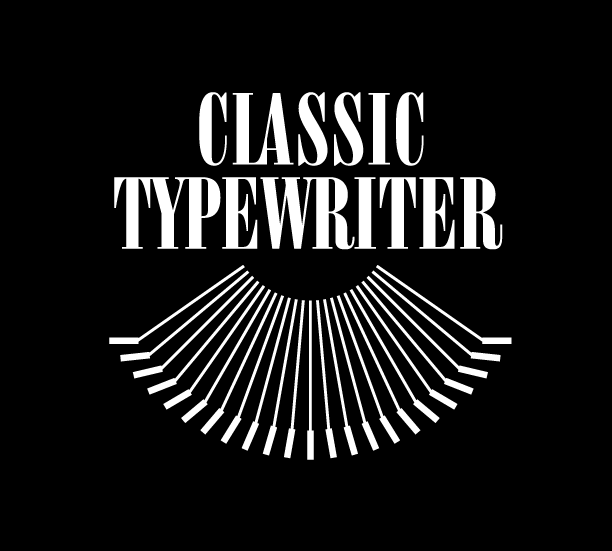Henry Miller and the Typewriters He Loved: A Journey Through Time, Creativity, and Influence
Henry Miller, the American writer, artist, and free spirit, is remembered for his bold prose and groundbreaking literary contributions. Best known for works like Tropic of Cancer (1934) and Black Spring (1936), Miller’s writings embodied raw honesty, sensuality, and the human condition. However, few realize the role typewriters played in his creative process. Miller’s relationship with typewriters was as passionate and free-spirited as the life he led. This blog dives into the models he used, the periods and places he lived, the famous people he knew, and how they influenced his remarkable body of work.
Henry Miller’s Typewriter Timeline: Models and Memories
Henry Miller wasn’t a typewriter collector, but his tools were essential to his craft. Writing from Paris to Big Sur, Miller often relied on the practicality and durability of typewriters to bring his stories to life.
Corona 3 Portable Typewriter
Era: 1920s-1930s
Significance: During Miller’s early years in Paris, he used the Corona 3 portable typewriter. This model, a favorite of writers who traveled frequently, was compact, lightweight, and foldable. The Corona 3’s portability matched Miller’s nomadic lifestyle, making it an indispensable companion.
Location: Paris, France
Notable Work: Tropic of Cancer (1934)
Why It Worked for Miller: The Corona 3 allowed Miller to write freely while moving between cheap apartments and cafés in Paris. Its mechanical simplicity helped him focus on crafting his daring, stream-of-consciousness narratives.
Underwood Typewriter
Era: Late 1930s
Significance: As Miller’s fame grew, he began using an Underwood, a reliable full-sized typewriter known for its robust design. He likely wrote parts of The Colossus of Maroussi (1941) and The Air-Conditioned Nightmare (1945) on an Underwood.
Location: Greece and the United States
Notable Work: The Colossus of Maroussi (1941)
Why It Worked for Miller: The Underwood’s smooth typing action and durability were perfect for long hours of uninterrupted writing.
Remington Portable Typewriter
Era: 1940s-1950s
Significance: Later in life, while living in Big Sur, California, Miller used a Remington portable typewriter. Known for its reliability, this machine was ideal for Miller’s evolving needs.
Location: Big Sur, California
Notable Work: Big Sur and the Oranges of Hieronymus Bosch (1957)
Why It Worked for Miller: The Remington offered a sense of permanence and stability, reflecting Miller’s more settled lifestyle during his years in Big Sur.
The Literary Legacy of Henry Miller: Books and Influences
Books by Henry Miller
Miller’s work is as diverse as the typewriters he used, blending autobiography, fiction, and philosophical musings. Below is a timeline of his most notable works:
Tropic of Cancer (1934): Written in Paris, this groundbreaking novel was a bold departure from traditional storytelling. Its explicit content and unfiltered prose shocked readers and redefined modern literature.
Black Spring (1936): A follow-up to Tropic of Cancer, this book captures Miller’s reflections on life, art, and the human experience.
Tropic of Capricorn (1939): Often considered a companion to Tropic of Cancer, this novel dives deeper into Miller’s early years in New York City.
The Colossus of Maroussi (1941): Inspired by his travels in Greece, this book is a love letter to Greek culture and philosophy.
The Air-Conditioned Nightmare (1945): A critique of American consumerism and culture, written after Miller returned to the U.S.
Big Sur and the Oranges of Hieronymus Bosch (1957): A semi-autobiographical account of Miller’s life in Big Sur, exploring creativity, community, and solitude.
Famous Friends and Influences
Henry Miller’s circle of friends included some of the most influential artists and writers of his time. Their connections enriched his worldview and, in turn, shaped his writing.
Anaïs Nin: Miller’s relationship with Anaïs Nin was both personal and professional. Nin, an author and diarist, encouraged Miller to pursue his unique style and even helped finance the publication of Tropic of Cancer. Her introspective and lyrical writing influenced Miller’s work profoundly.
Lawrence Durrell: The British author of The Alexandria Quartet was a close friend of Miller. Durrell’s poetic prose and love of travel resonated deeply with Miller’s own themes.
Ezra Pound: Though not a direct mentor, Pound’s literary innovations and ideas about modernism had a significant impact on Miller’s approach to storytelling.
Walt Whitman: Miller frequently cited Whitman as one of his greatest influences. The free verse and transcendental themes in Whitman’s Leaves of Grass inspired Miller’s own explorations of human experience and spirituality.
The Places That Shaped Henry Miller’s Writing
Paris, France
Years: 1930-1939
Impact: Miller thrived in the bohemian atmosphere of Paris, where he mingled with expatriate writers and artists. The city’s vibrancy and freedom were essential to his creative awakening.
Greece
Years: 1939-1940
Impact: Miller’s brief time in Greece inspired The Colossus of Maroussi, a reflection on the beauty of Greek culture and philosophy.
Big Sur, California
Years: 1944-1962
Impact: Big Sur offered Miller the solitude and natural beauty he craved. His time there led to some of his most reflective and philosophical works, including Big Sur and the Oranges of Hieronymus Bosch.
The Enduring Appeal of Henry Miller’s Typewritten Legacy
Henry Miller’s typewriters were more than tools—they were an extension of his creative soul. From the Corona 3’s portability in Paris to the sturdy Underwood in Greece and the reliable Remington in Big Sur, these machines helped Miller capture the essence of his turbulent and fascinating life. His stories, influenced by the people he knew and the places he lived, continue to inspire readers and writers around the world.
Whether you’re a fan of his bold prose or a fellow typewriter enthusiast, exploring Miller’s relationship with his typewriters offers a unique window into the mind of one of the 20th century’s most influential authors. If you’re searching for inspiration, consider Miller’s approach: embrace the raw, unfiltered essence of life, and let the keys of your typewriter tell the story.

